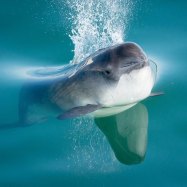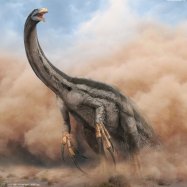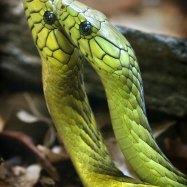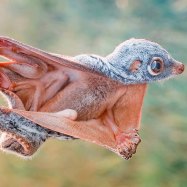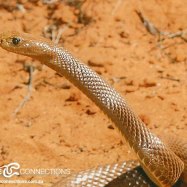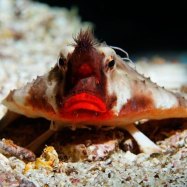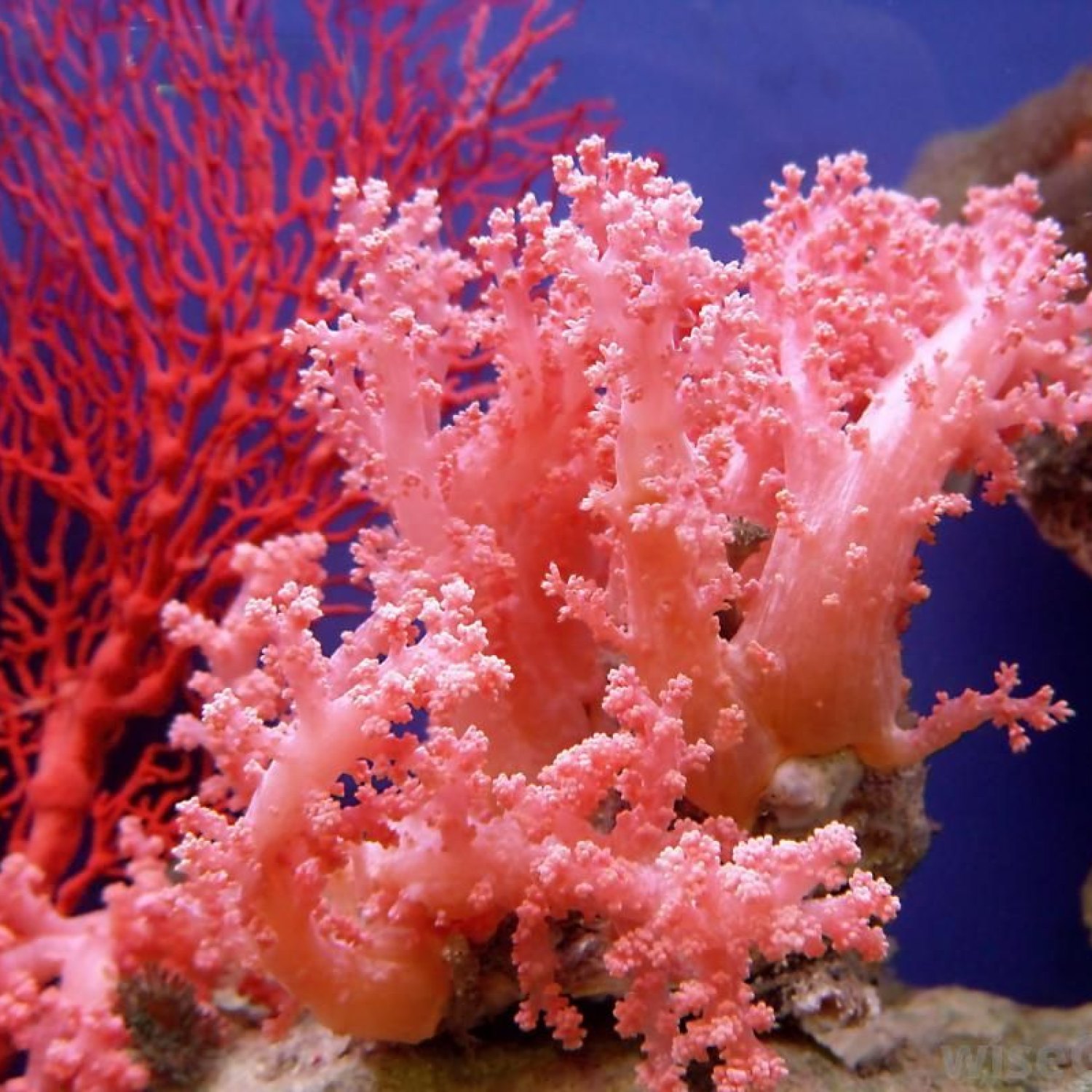
Coral
Varies greatly depending on the species
Did you know that coral is a type of animal? These fascinating creatures can be found in various colors and sizes in reef environments. Their diverse family includes polyps, which have varying body shapes. The length of corals can vary greatly depending on the species. Explore the amazing world of coral and learn more about these unique animals! #Coral #ReefAnimals #AnimalFacts
Animal Details Summary:
Common Name: Coral
Kingdom: Animalia
Habitat: Marine
The Diverse World of Coral: A Closer Look at Anthozoa
Coral is often seen as one of the most beautiful and fascinating creatures in the ocean. Its vibrant colors and intricate structures have captivated the hearts of humans for centuries. But there is so much more to coral than just its aesthetic appeal. In fact, coral is an extremely important and complex animal that plays a crucial role in marine ecosystems Coral. In this article, we will explore the world of coral and its many amazing features, with a special focus on its scientific name, Anthozoa.First things first, what exactly is coral? Despite being commonly mistaken for a plant, coral is actually an animal. Specifically, it belongs to the phylum Cnidaria, which also includes creatures like jellyfish and sea anemones. Within this phylum, coral falls under the class Anthozoa, along with other species of sea anemones and corals. Its scientific name, Anthozoa, comes from the Greek words "anthos" meaning flower and "zoon" meaning animal, referring to its flower-like appearance.
Coral can be found in various marine environments, but it is most commonly associated with reefs. In fact, coral reefs are one of the most diverse and productive ecosystems in the world, providing a home for countless marine species. Due to their importance, coral reefs have been referred to as the "rainforests of the sea." They can be found in tropical and subtropical oceans all around the world, with the highest diversity found in the Indo-Pacific region California Condor.
One of the most fascinating things about coral is its feeding method. As a filter feeder, coral uses its tentacles to capture and consume tiny organisms, such as plankton, from the surrounding water. This not only provides coral with the necessary nutrients, but also helps maintain a balance in the marine ecosystem. Additionally, coral has a symbiotic relationship with microalgae called zooxanthellae, which live within its tissues. These algae provide coral with food through photosynthesis and also give coral its vibrant colors.
When it comes to appearance, coral is known for its stunning and diverse coloration. It can come in a range of colors, including white, yellow, red, and blue, depending on the species and environmental factors. While its colors may initially seem like a display of beauty, they actually serve a crucial purpose. The bright colors not only attract prey for feeding, but also act as a protection from predators. Additionally, coral's body shape also aids in its defense as a polyp.
Speaking of shape, the body shape of coral is often described as a polyp. Polyps are cylindrical or sac-like structures that are attached to a surface at one end. In the case of coral, these polyps are fixed onto a calcium carbonate skeleton, which is what forms the structure of coral reefs. It is this skeleton that gives coral its unique and intricate shapes, making it a true marvel of nature.
But despite its seemingly strong and rigid appearance, coral is actually quite delicate and sensitive to its environment. Coral requires specific conditions, such as warm water and clear oceanic conditions, to thrive. Even small changes in water temperature or pollution levels can have devastating effects on coral reefs and the species that depend on them.
Unfortunately, coral has been facing many threats in recent years, with the most significant being climate change and human activity. As ocean temperatures continue to rise, coral experiences coral bleaching, where it expels its zooxanthellae, leaving it vulnerable and often resulting in death. Additionally, human activities such as overfishing, pollution, and physical damage from activities like anchoring and diving, also contribute to the decline of coral populations.
Despite the challenges facing coral, there are efforts being made to protect and conserve these vital marine creatures. Organizations such as the Coral Reef Alliance and The Nature Conservancy are working towards protecting and restoring coral reefs through various projects and initiatives. Individuals can also play a role in protecting coral by being mindful of their actions and making sustainable choices, such as opting for reef-safe sunscreen and supporting responsible tourism practices.
In conclusion, coral is a fascinating and incredibly important animal that deserves our attention and protection. From its complex feeding method to its unique appearance, coral has proven to be a crucial component of marine ecosystems. By understanding and appreciating the diversity and significance of coral, we can work towards preserving these creatures and the magnificent coral reefs they call home. So next time you see a coral reef, remember the amazing creature that lies beneath the surface – Anthozoa, the flower animal.

Coral
Animal Details Coral - Scientific Name: Anthozoa
- Category: Animals C
- Scientific Name: Anthozoa
- Common Name: Coral
- Kingdom: Animalia
- Phylum: Cnidaria
- Class: Anthozoa
- Order: Scleractinia
- Family: Various
- Habitat: Marine
- Feeding Method: Filter Feeder
- Geographical Distribution: Tropical and subtropical oceans
- Country of Origin: N/A
- Location: Reef environments
- Animal Coloration: Various colors including white, yellow, red, and blue
- Body Shape: Polyp
- Length: Varies greatly depending on the species
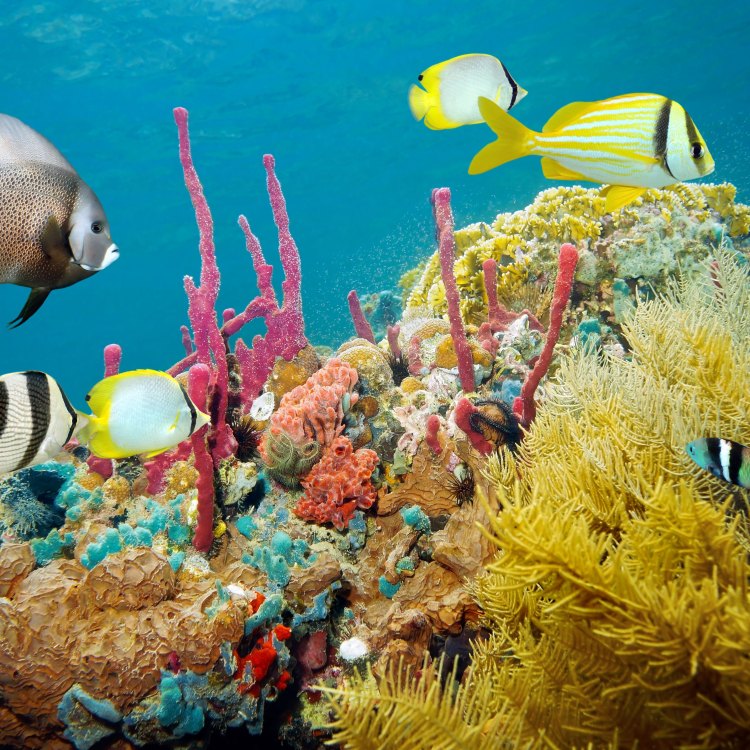
Coral
- Adult Size: Varies greatly depending on the species
- Average Lifespan: Up to several hundred years
- Reproduction: Sexual and asexual
- Reproductive Behavior: Release of eggs and sperm into the water for external fertilization
- Sound or Call: No sound or call
- Migration Pattern: Non-migratory
- Social Groups: Colonial animals
- Behavior: Sessile and passive filter feeders
- Threats: Coral bleaching, ocean acidification, pollution, overfishing
- Conservation Status: Various species are listed as vulnerable, endangered, or critically endangered
- Impact on Ecosystem: Coral reefs provide habitat for numerous marine species and protect coastlines
- Human Use: Ornamental purposes, construction, and tourism
- Distinctive Features: Calcium carbonate skeleton, symbiotic relationship with zooxanthellae algae
- Interesting Facts: Coral reefs are the largest structures built by living organisms
- Predator: Various species of fish and invertebrates
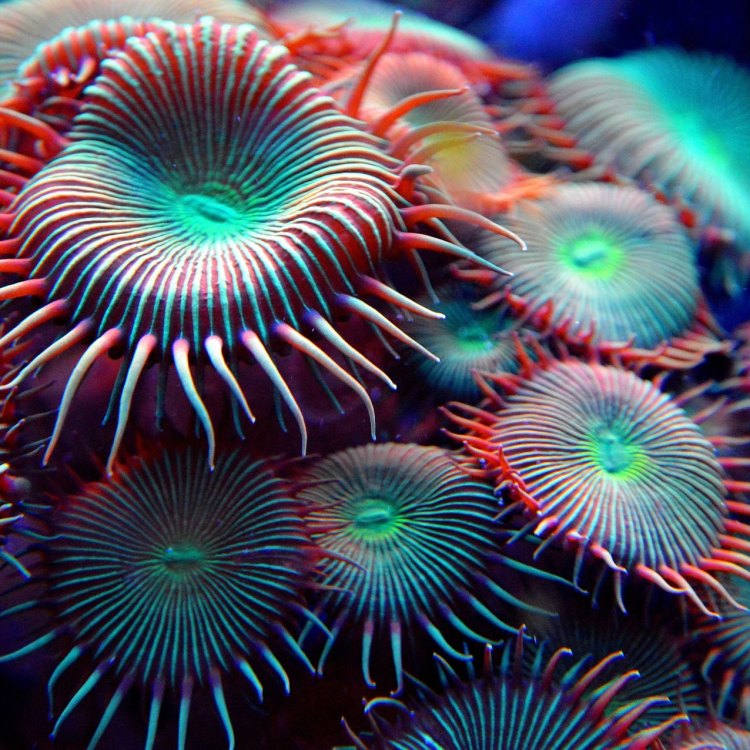
Anthozoa
The Dazzling World of Coral: Unique Features and Importance for Our Oceans
The ocean is home to a diverse array of marine creatures, from the largest whales to the smallest plankton. But among these creatures, lies a hidden world that is often overlooked and underappreciated - coral.Coral may seem like just another type of colorful underwater plant or rock, but in reality, it is a complex and fascinating animal. The unique features of coral and its vital role in our oceans make it a subject of great interest and importance PeaceOfAnimals.Com.
In this article, we will uncover the hidden wonders of coral, from its various species to its impact on the ecosystem and its importance for human use. Let's dive in and explore the dazzling world of coral.
What is Coral?
Coral is a marine invertebrate that belongs to the phylum Cnidaria, which also includes jellyfish and sea anemones. It is often mistaken for a plant or a rock, but in reality, it is a colony of tiny animals called polyps.Polyps are tiny, soft-bodied organisms with a tubular body and tentacles surrounding the mouth. They have a hard exterior made of calcium carbonate, which they use to protect themselves. When thousands of polyps come together, they form a coral colony.
There are over 800 species of coral, and they can be found in various shapes, sizes, and colors. The size of a coral colony can range from a few centimeters to several meters, depending on the species Christmas Beetle.
Unique Features of Coral
One of the most distinctive features of coral is its calcium carbonate skeleton, which makes it a vital part of coral reefs. These skeletons, also known as exoskeletons, are what give coral its hard, rock-like appearance and provide protection to the polyps.But coral's unique features do not stop there. It also has a symbiotic relationship with zooxanthellae algae, a type of photosynthetic algae that lives in the tissues of the polyps. This relationship is crucial for both the coral and the algae as the algae provides food for the coral through photosynthesis, while the coral provides a safe haven for the algae.
The algae give coral its vibrant colors, making it a beautiful sight to behold. Its vibrant colors also serve as a warning to predators, as many coral species are venomous and can cause harm to their attackers.
Reproduction and Behavior
Coral has a unique reproductive process that involves both sexual and asexual reproduction. During the breeding season, coral colonies release eggs and sperm into the water for external fertilization. This process leads to the growth of new coral colonies.On the other hand, coral can also reproduce asexually through a process called budding. Budding is when polyps divide and form new individuals, which then grow and create a new colony. This process allows coral to reproduce and spread quickly, making it a crucial part of the marine ecosystem.
Coral is a sessile animal, meaning it is stationary and cannot move from its spot. This behavior makes it vulnerable to predators, but it has a unique defense mechanism. When threatened, coral releases tiny stinging cells called nematocysts to protect itself from potential attackers.
When it comes to its daily behavior, coral is a passive filter feeder. It extends its tentacles to catch plankton and other small organisms floating in the water. The algae living in its tissues provide the coral with some of the nutrients it needs, making it a unique type of animal that relies on both photosynthesis and filter feeding for survival.
Threats and Conservation Status
Like many other marine creatures, coral is facing numerous threats that are endangering its existence. One of the biggest threats to coral reefs is coral bleaching, a phenomenon that occurs when the symbiotic relationship between the coral and the algae breaks down due to stress. This can happen due to changes in water temperature, pollution, or disease, leading to the coral losing its vibrant colors and eventually dying.Another threat to coral is ocean acidification caused by increased carbon dioxide levels in the atmosphere, which leads to a decrease in the pH of the ocean. This decrease in pH can affect the formation of coral skeletons and make them more susceptible to damage.
Pollution and overfishing are also major threats to coral reefs. Pollution, such as plastic debris and chemical runoff, can harm coral colonies and the organisms living in them. Overfishing, especially of herbivores that keep algae growth in check, can lead to an overgrowth of algae that can smother and kill coral reefs.
Due to these threats, various species of coral are listed as vulnerable, endangered, or critically endangered on the IUCN Red List. It is estimated that 19% of the world's coral reefs have already been lost, and another 15% are in danger of being lost in the next decade.
The Importance of Coral for the Ecosystem
Coral reefs may seem like a small part of the vast ocean, but their importance cannot be overstated. Coral reefs serve as a vital habitat for numerous marine species, providing shelter and food for a diverse array of organisms. It is estimated that about one-quarter of all marine species depend on coral reefs for survival.Coral reefs also play a crucial role in protecting coastlines. They act as a natural barrier against strong ocean currents and waves, preventing erosion and protecting shorelines from storm damage. In some areas, coral reefs are the only defense against the powerful forces of the ocean.
Not only do coral reefs support marine life, but they are also essential for the economies of coastal communities. Coral reefs provide a valuable source of food and income through fishing and ecotourism. In fact, it is estimated that the global economic value of coral reefs is around $29.8 billion annually.
Human Use of Coral
The unique features of coral make it not only essential for the marine ecosystem but also valuable for human use. One of the main uses of coral is for ornamental purposes. The vibrant colors and intricate designs of coral make it a popular choice for jewelry, home decor, and other decorative items.Coral is also used in construction, especially in coastal areas, as it is a strong and durable building material. It is also used in various industries, such as pharmaceuticals and cosmetics, for its medicinal and skincare properties.
Tourism is another significant use of coral. Often referred to as the "rainforests of the sea," coral reefs attract millions of visitors every year, contributing to the economy of many coastal regions. However, it is crucial for tourism to be sustainable and not contribute to the destruction of coral reefs.
Interesting Facts About Coral
Coral may seem like just another type of marine life, but it has some fascinating facts that make it truly unique and worth learning about. Here are some interesting facts about coral:- Coral reefs are the largest structures built by living organisms on Earth.
- There are more than 800 species of coral, each with its unique colors and patterns.
- The Great Barrier Reef is the largest coral reef system in the world, stretching over 2,300 kilometers along the coast of Australia.
- Some coral species can live for several hundred years, making them one of the longest-living animals on Earth.
- Coral can be found in all the world's oceans, from the shallowest to the deepest parts.
- Despite its stony appearance, coral is a living organism that is sensitive to changes in its environment.
Predators of Coral
Despite its protective exoskeleton and defense mechanisms, coral has numerous predators in its marine habitat. Some of the main predators of coral include various species of fish and invertebrates, such as parrotfish, sea stars, and sea urchins. These creatures feed on the polyps and the algae living in the coral's tissues.However, the biggest threat to coral is not these natural predators, but human activities that are rapidly damaging coral reefs.
In Conclusion
Coral may seem like just another colorful underwater plant or rock, but it is much more than that. Its unique features, such as its calcium carbonate skeleton and symbiotic relationship with algae, make it a crucial part of the marine ecosystem. However, coral's existence is under threat from various human activities, and it is our responsibility to protect and preserve this mesmerizing underwater world for future generations to come.
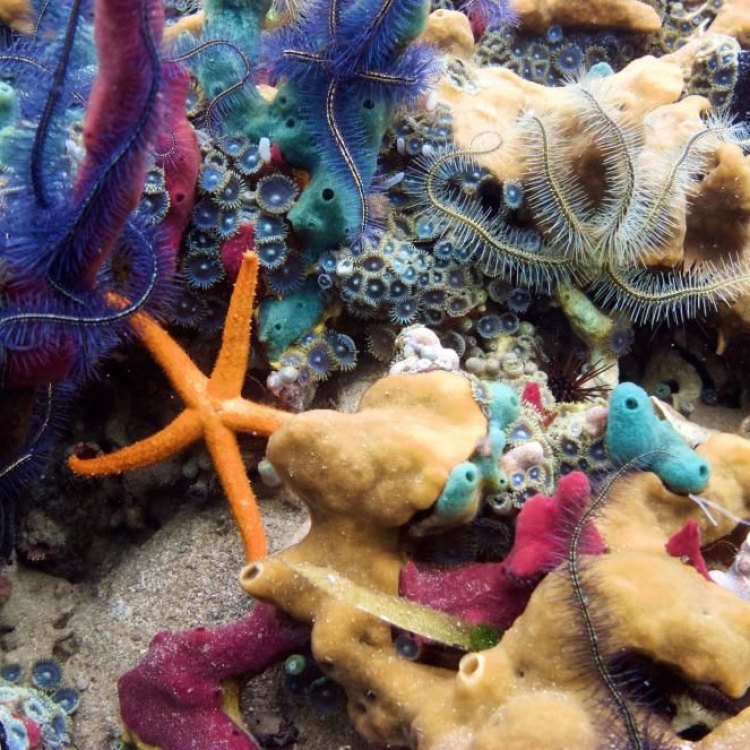
The Diverse World of Coral: A Closer Look at Anthozoa
Disclaimer: The content provided is for informational purposes only. We cannot guarantee the accuracy of the information on this page 100%. All information provided here may change without prior notice.

